Ghost Particles and Singing Ice: 11 Wild Antarctic Stories from 2018
Strange, icy stories

Few forms of life can survive the harsh and punishing conditions of Antarctica. And yet, this icy landscape is an astonishingly rich resource for scientists seeking to understand what makes our planet tick. Decades of research have revealed that Antarctica is full of surprises, and 2018 research was no exception. From subterranean earthquakes to bizarre subatomic particles to buried "ice highways," here are a few of the weirdest discoveries that emerged from Antarctica this year.
Cosmic particles
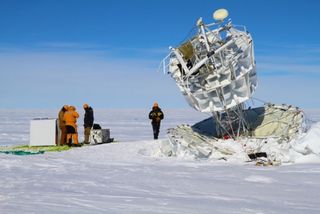
High-energy particles are streaming from Antarctica's ice, and scientists don't know what they are. Particles shooting upward from the ground in Antarctica could be cosmic rays that traveled to Earth from space, blasted through the planet and came back out the other side. However, the known cosmic particles aren't supposed to make it through the Earth without bumping into something and decaying. For that reason, scientists suspect that these particles were of a previously unknown type that defies the Standard Model (the prevailing description of how all particles behave).
In September, researchers revealed that there were even more examples of this unusual particle behavior in Antarctica than previously suspected. These oddball particles had "much less than a 1-in-3.5-million chance of being part of the Standard Model," the scientists reported.
Singing ice
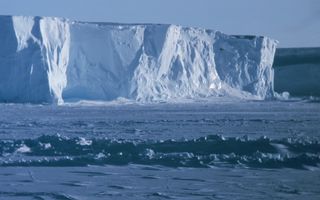
You can't hear it, but the ice that covers Antarctica "sings." Researchers unexpectedly discovered the sound, which is not audible to human ears, while investigating other aspects of ice behavior using seismic sensors.
Recordings gathered by 34 sensors over two years revealed that when winds whipped over the surface of the ice, the topmost layer would vibrate almost constantly, producing a hum at a frequency of about 5 hertz. The researchers also found that certain conditions could affect the pitch of the hum, such as an unusual warming event that took place in January 2016 and seasonal storms that reshaped snow dunes.
Lost continents
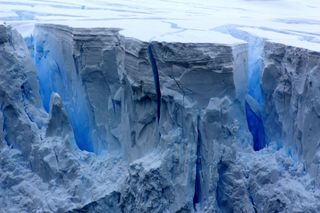
Scientists recently discovered something surprising under Antarctica's ice: the remains of ancient continents. Researchers compiled a new map of Antarctica from satellite data taken from 2009 to 2013; they found that East Antarctica was a composite of large blocks of the Earth's crust known as cratons, which were left behind from earlier continents.
Their findings recall Antarctica's history as part of Gondwana, a supercontinent that broke up about 180 million years ago.
Some like it hot
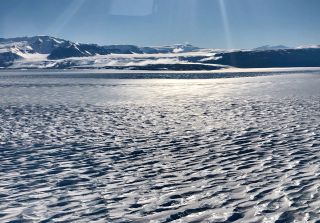
Antarctica is exceptionally cold, but underneath its icy cover lurks a source of surprising heat. The crust under East Antarctica is relatively thick compared to the crust under West Antarctica; this means that the bottom of the eastern region's ice sheet should be insulated from the heat of magma below the surface.
However, scientists recently detected unexpectedly high quantities of melted water under East Antarctica's ice sheet, suggesting that the heat underground must be especially intense. It's not clear why this zone is a "hotspot," but researchers suspect that the heat is produced by hydrothermal energy, emanating through a crack in the crust underneath the ice.
Missing lakes
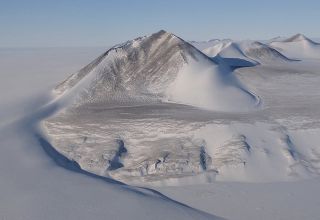
A network of lakes that was long thought to extend under Antarctica's Recovery Glacier may have disappeared. The lakes were thought to rest between the bottom of the glacier and the continent's bedrock, but a radar survey failed to produce any evidence of hidden lakes beneath the ice.
Previously, satellite data suggested that there were four big lakes and 11 smaller lakes in the area. But the scientists found just a single zone that could be a lake; however, it could also just be an expanse of swampy soil, the study authors reported.
Getting taller
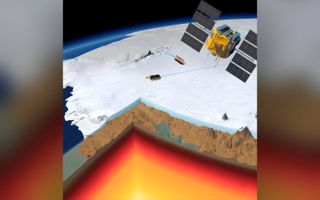
Antarctica's bedrock is on the rise, and the lift is happening more quickly than ever. Vanishing ice may be the culprit, as melt lightens the load on the underlying bedrock. Over time, the force of roiling magma underneath the rock nudges it upward.
While the rise of supporting bedrock could increase stability in the ice sheet above that bedrock, there's a downside to this upward momentum. Because the ground has shifted in recent years, satellite measurements of ice loss have likely been inaccurate — meaning researchers may have underestimated the rate of disappearing ice by up to 10 percent.
Slip slidin' away
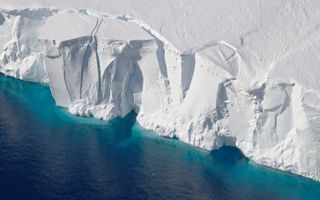
Over a 25-year survey, a staggering 3 trillion tons of ice vanished from Antarctica. About one-third of that ice disappeared all at once when an iceberg the size of Delaware broke off from the Larsen C ice shelf in July 2017; weighing an estimated 1 trillion tons, it was the largest iceberg in recorded history.
In a new study, scientists tracked changes in Antarctica's ice over time as shown in three types of satellite measurements, tracking the ice's mass and volume and the speed of glacial flows into the ocean. The researchers found that the rate of ice loss has been rising over the past five years.
Volcanic heat
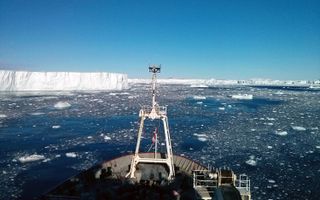
Buried underneath Antarctica's ice is a hidden reservoir of heat, generated by a volcanic vent. And the fastest-melting glacier on the continent, Pine Island Glacier, is feeling the heat, its melt likely spurred by magma deep underground.
Though scientists can't see the magma directly, they identified it through chemical "fingerprints" that turned up in seawater samples. The unusual chemistry of melted ice flowing down the glacier suggested that there was a source of volcanic heat upstream; it warmed the ice from below and accelerated ice melt into the Amundsen Sea.
Penguin mummies
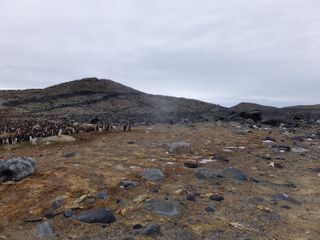
Mummies are usually associated with hot deserts, but in 2018, scientists described the discovery of hundreds of mummified penguins, found on East Antarctica's Long Peninsula in 2016. Though Antarctica is very cold, it's still classified as a desert because it receives so little precipitation, and the dry, cold conditions effectively mummified the dead birds — many of which were chicks.
But the penguins didn't all die at once. Radiocarbon dating revealed the age of the mummies, and it turned out that many of the birds died over decades, and during two different periods: 200 years ago and 750 years ago. Both of those events were likely caused by habitat disruption from extreme weather.
Hidden earthquakes
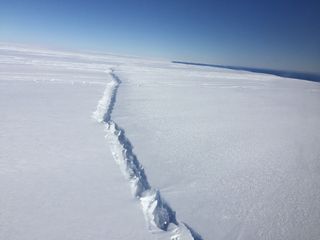
New evidence recently revealed that hundreds of earthquakes may be shaking things up under Antarctica's ice. Scientists have long thought that Antarctica experienced next to no seismic activity, unlike Earth's other continents, based on data from seismic sensors on the ground. But a new study suggests that earthquakes rumble to life deep under the Antarctic ice as frequently as they do elsewhere on Earth.
For the study, researchers deployed arrays of sensors across the continent, and they detected earthquakes in remote locations where seismic activity had never been noted before. Their readings spotted 27 small earthquakes that ranged from magnitude 2.1 to magnitude 3.9.
Sign up for the Live Science daily newsletter now
Get the world’s most fascinating discoveries delivered straight to your inbox.

Mindy Weisberger is an editor at Scholastic and a former Live Science channel editor and senior writer. She has reported on general science, covering climate change, paleontology, biology, and space. Mindy studied film at Columbia University; prior to Live Science she produced, wrote and directed media for the American Museum of Natural History in New York City. Her videos about dinosaurs, astrophysics, biodiversity and evolution appear in museums and science centers worldwide, earning awards such as the CINE Golden Eagle and the Communicator Award of Excellence. Her writing has also appeared in Scientific American, The Washington Post and How It Works Magazine.
